How a scooter is born at Honda’s Gujarat plant
Honda's Gujarat plant, the first-ever scooters-only production facility in the world, is expected to reach peak capacity of 1.2 million units around the upcoming festive season in September-October 2016.
Honda Motorcycle & Scooter India’s (HMSI) Gujarat plant, the first-ever scooters-only production facility in the world, is expected to reach peak capacity of 1.2 million units around the upcoming festive season in September-October 2016.
The Rs 1,100 crore plant, which saw operations officially commence in February 2016, therefore could become the fastest two-wheeler plant (of its scale) in terms of capacity utilisation hitting its peak within 12 months of its operations, all thanks to the robust demand for scooters. We take you on a virtual tour through the production facility!
The starting point of the engine and transmission assembly line, which has 41 stations before a complete unit is assembled.
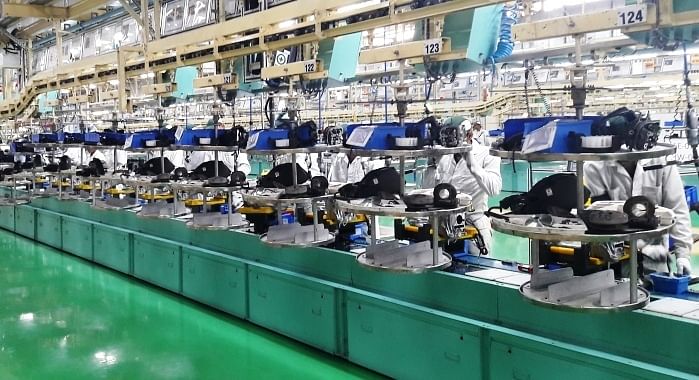
Assembly of the engine and transmission unit is performed over a continuously moving automated conveyor belt, giving each station and its trained operator a scant 22 seconds.
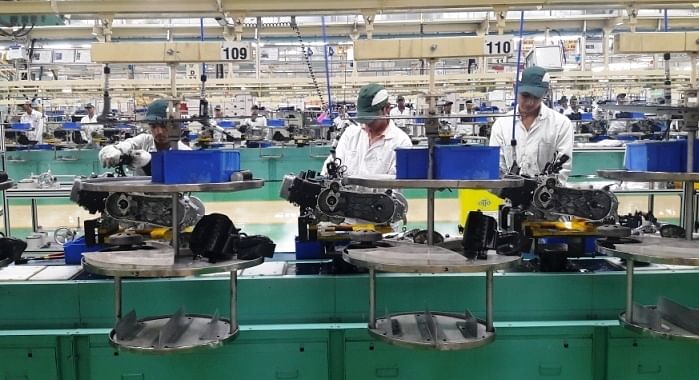
Assembled powertrain unit is lifted and placed on automated conveyor belt, which moves them to scooter assembly area.
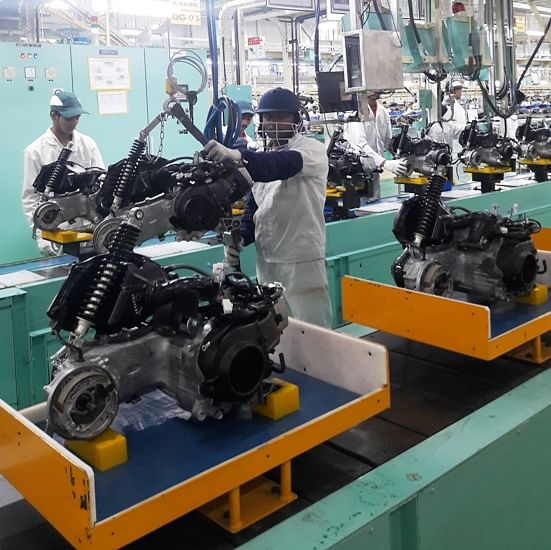
Engine-moving conveyor belt efficiently designed (briefly goes underground and returns up) making way for worker movement.
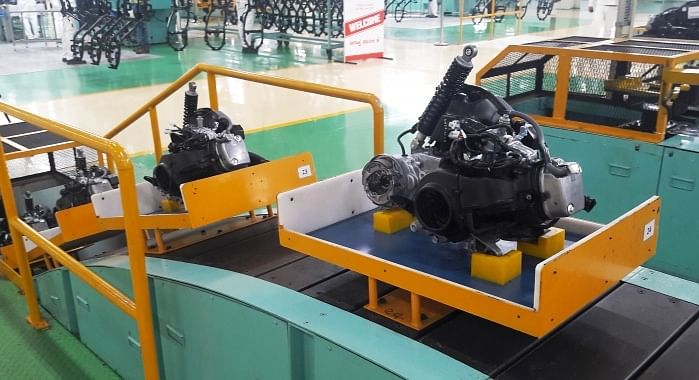
Scooter frame assembly area at the starting point of scooter assembly operations.
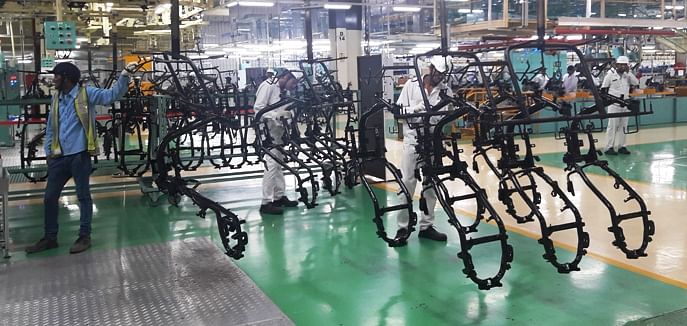
The scooter assembly line begins with drivetrain assembly. Engine and Continuously Variable Transmission (CVT) unit are bolted onto the frame and the rear wheel and other components.
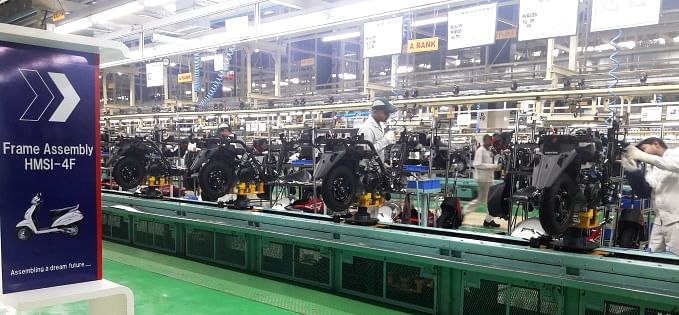
After rear wheel assembly, the front wheel, suspension, fork and mudguard units are bolted onto the scooter frame.
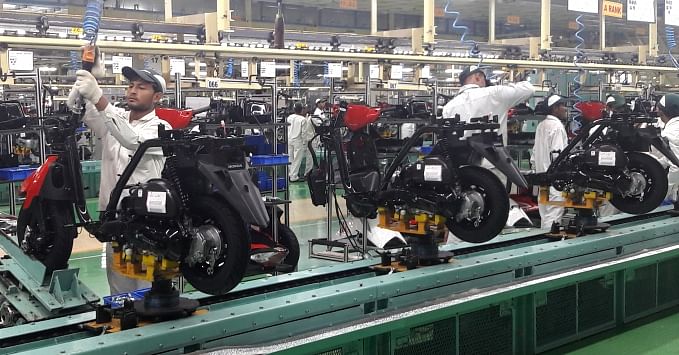
Further fitment of front wheel assembly to the scooter frame. The scooter frame assembly line has a total of 67 workstations with the same allotted standard time of 22 seconds per station.
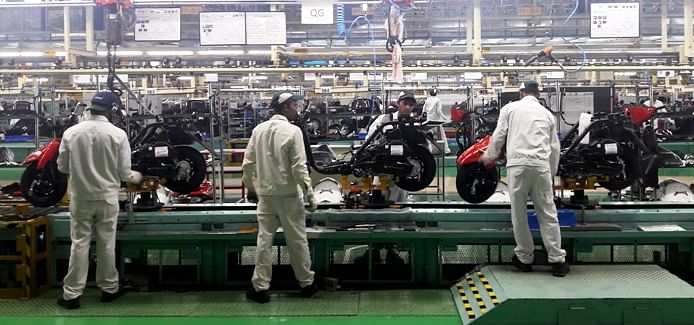
Front wheel assembly and parts like mudguard and exhaust unit being added at the rear. Far right: Scooter assembly moving towards its last stages with mounting of fuel tank, passenger seat, body panels and others.
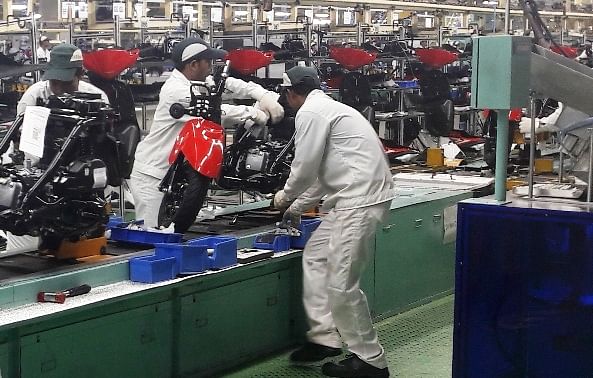
Frame assembly sees several stages of front and rear mountings, manually bolted and checked.
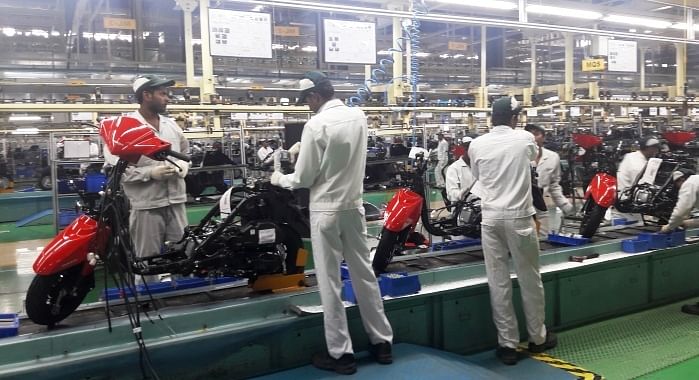
A worker mounts the handlebar, shroud, instrument cluster and brake cables on the front of the scooter frame assembly.
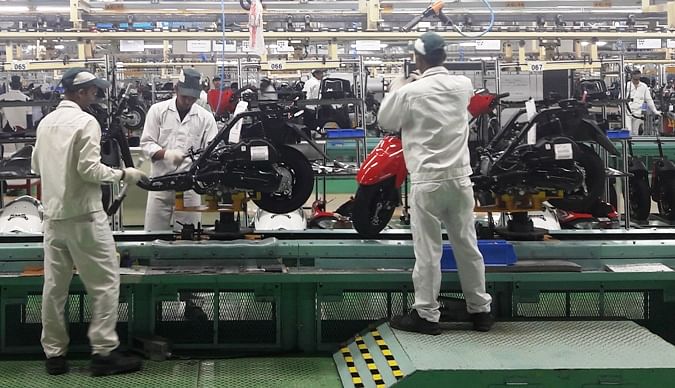
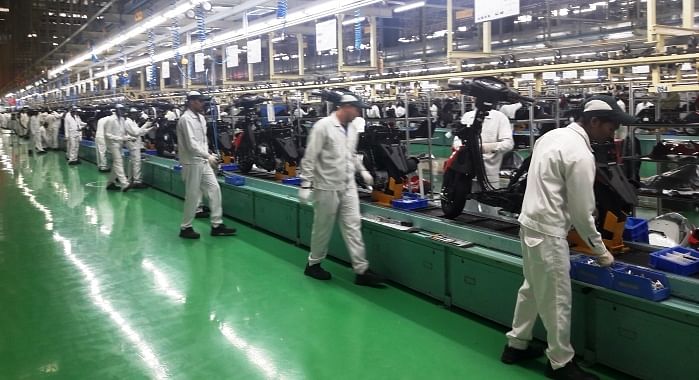
Last stage includes bolting the numberplate on front panel and visual inspection. Each scooter gets assembled from scratch, passing through a total of 108 workstations in under 40 minutes.
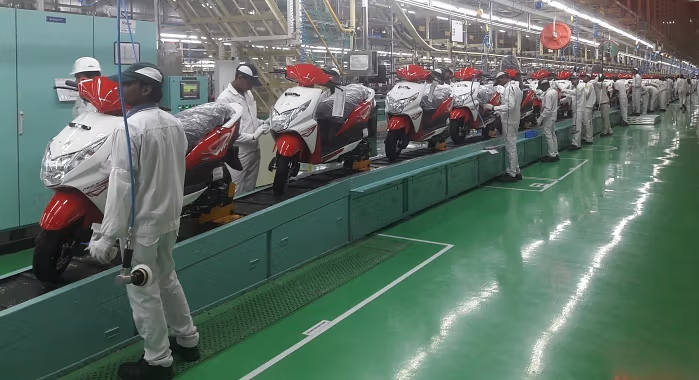
Fully assembled scooters are rolled off the assembly lines and are brought to this section for visual surface checks.
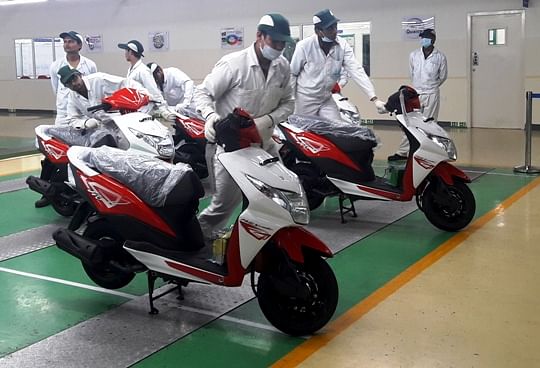
The visual check over, each scooter undergoes the chassis dynamometer test where it is tested for power transmission to the rear wheel, rpm, balance, performance and other parameters.
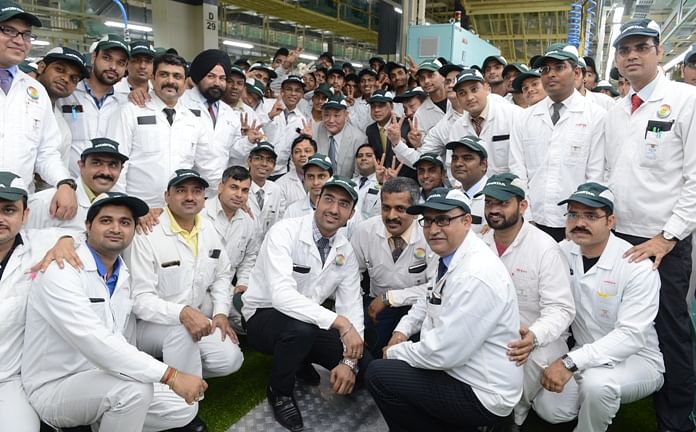
Recommended: How a 'Made-in-India' Suzuki Hayabusa takes shape
RELATED ARTICLES
How Venkat Thimaraju Bridged Mines and Machines for Daimler
From a young engineer's vision : Daimler India unleashes next-Gen trucks for India's booming construction and mining sec...
Tata Motors: From Ice Legacy To Electric Intelligence
Tata Motors has a lot riding on the newly launched Harrier EV, coming as it does on a fresh, EV-oriented software platfo...
Complete List of Cars and SUVs Tested by Bharat NCAP
Bharat NCAP has crash-tested 20 models to date, including both ICE-powered vehicles and EVs.





 By Amit Panday
By Amit Panday
 29 Jul 2016
29 Jul 2016
 21307 Views
21307 Views




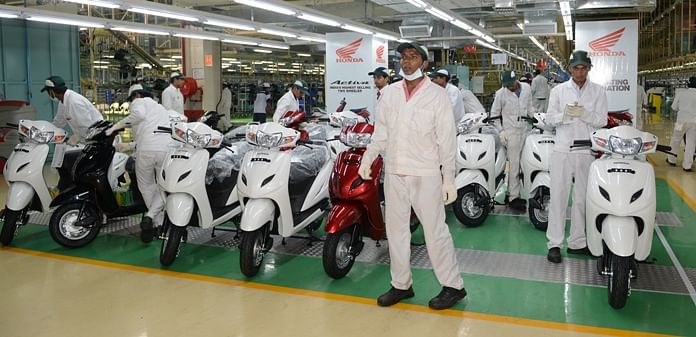

 Shahkar Abidi
Shahkar Abidi




